
Kraljevo is a city and the administrative center of the Raška District in central Serbia. It is situated on the confluence of West Morava and Ibar, in the geographical region of Šumadija, between the mountains of Kotlenik in the north, and Stolovi in the south.

Krupanj is a town and municipality located in the Mačva District of western Serbia. The municipality has a total population of 17,295 inhabitants, while the town has a population of 4,429 inhabitants.

Serbian diaspora refers to Serbian emigrant communities in the diaspora. The existence of a numerous diaspora of Serbian nationals is mainly a consequence of either economic or political reasons.

The Church of Saint Sava is a Serbian Orthodox church which sits on the Vračar plateau in Belgrade, Serbia. It was planned as the bishopric seat and main cathedral of the Serbian Orthodox Church. The church is dedicated to Saint Sava, the founder of the Serbian Orthodox Church and an important figure in medieval Serbia. It is built on the presumed location of St. Sava's grave. His coffin had been moved from Mileševa Monastery to Belgrade. The coffin was placed on a pyre and burnt in 1595 by Ottoman Grand Vizier Sinan Pasha. Bogdan Nestorović and Aleksandar Deroko were finally chosen to be the architects in 1932 after a second revised competition in 1926–27. This sudden decision instigated an important debate in interwar Yugoslavia which centered around the temple's size, design and symbolic national function. This was accompanied by a sizeable increase in the base area of the ambitiously conceived project. The new design departed from the competition guidelines issued in 1926, and was to replicate the dimensions and architecture of Hagia Sophia.
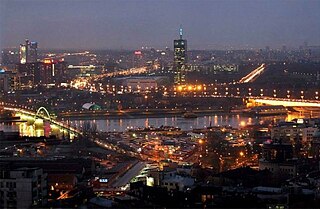
New Belgrade is a municipality of the city of Belgrade. It was a planned city and now is the central business district of Serbia and South East Europe. Construction began in 1948 in a previously uninhabited area on the left bank of the Sava river, opposite old Belgrade. In recent years, it has become the central business district of Belgrade and its fastest developing area, with many businesses moving to the new part of the city, due to more modern infrastructure and larger available space. With 209,763 inhabitants, it is the second most populous municipality of Serbia after Novi Sad.
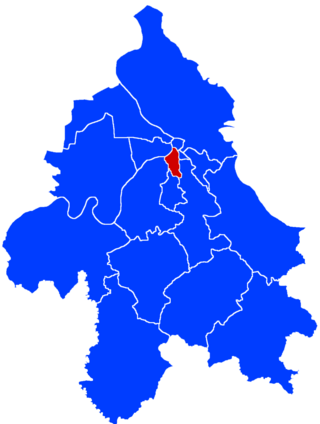
Savski Venac is a municipality of the city of Belgrade. According to the 2022 census results, the municipality has a population of 36,699 inhabitants.

Vračar is an affluent urban area and municipality of the city of Belgrade known as the location of many embassies and museums. According to the 2022 census results, the municipality has a population of 55,406 inhabitants.
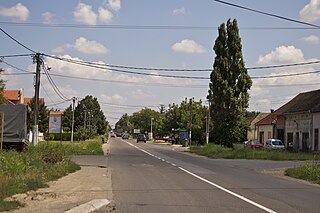
Surčin is a municipality of the city of Belgrade. As of 2022 census, it has a population of 45,452 inhabitants.
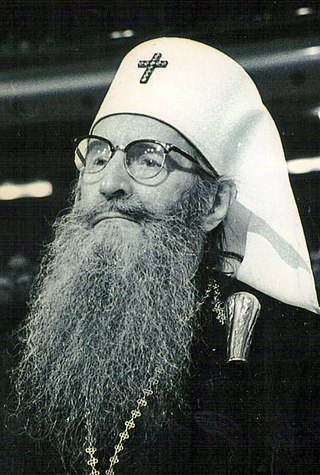
German was the 43rd Patriarch of the Serbian Orthodox Church from 1958 to 1990. He was successful in revitalizing the Serbian Orthodox Church to a certain extent during the Communist period, despite two schisms that occurred during his tenure.
Rupčine is an urban neighborhood of Belgrade, the capital of Serbia. It is located in Belgrade's municipality of
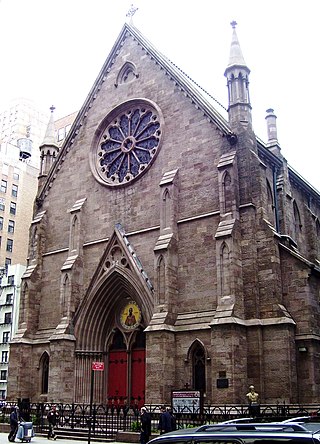
Serbian Americans or American Serbs, are Americans of ethnic Serb ancestry. As of 2013, there were about 190,000 American citizens who identified as having Serb ancestry. However, the number may be significantly higher, as there were some 290,000 additional people who identified as Yugoslavs living in the United States.

Serbian Australians, are Australians of ethnic Serb ancestry. In the 2021 census there were 94,997 people in Australia who identified as having Serb ancestry, making it a significant group with the global Serb diaspora.

Zarožje is a village in the municipality of Bajina Bašta, in western Serbia. Located on the slopes of the Povlen mountain, Zarožje has abundance of forests and meadows, and developed agriculture and husbandry. The village, and one of its features, the watermill, are best known as the inspiration for Milovan Glišić's 1880 short story After ninety years. It featured Sava Savanović, the most famous vampire in Serbian folklore. The story was filmed in 1973 as one of the most popular Serbian horror films, Leptirica.

Serbs in Italy, also referred to as Italian Serbs are a community numbering 46,958.

Armenians in Serbia refers to ethnic Armenians living in Serbia.

There is a community of Serbs in Ukraine, which includes Ukrainian citizens of ethnic Serb descent or Serbian-born people residing in the country. According to the 2001 census, there were 623 citizens in Ukraine that declared Serb ethnicity. It is estimated that the community numbers ca. 1,000 (2012).
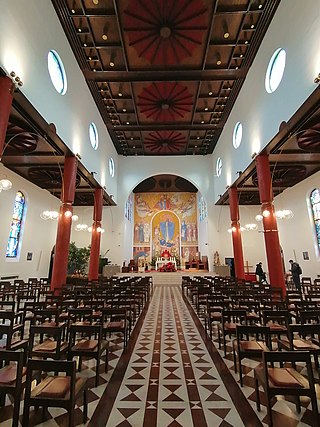
The Cathedral of the Blessed Virgin Mary also called the Catholic Cathedral of Belgrade is since 1988 the cathedral church of the Roman Catholic Archdiocese of Belgrade. It is located at 75 Hadži Milentijeva Street in the Belgrade's neighborhood of Neimar, in the municipality of Vračar.
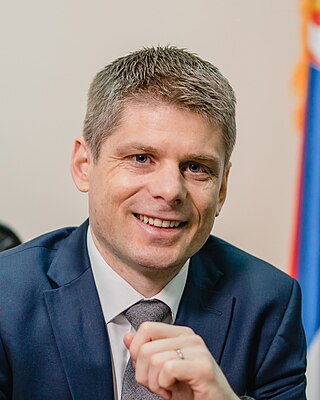
Arno Gujon is a French-born Serbian politician and humanitarian worker. He is the founder of Solidarité Kosovo, a French non-governmental humanitarian organization that helps Serbs living in enclaves in Kosovo. He has served as acting director of the Office for Cooperation with the Diaspora and the Serbs in the Region in the Ministry of Foreign Affairs of Serbia since 26 November 2020.

Saint Arsenije Sremac Serbian Orthodox Church is a Serbian Orthodox church located in Whitby, Ontario, Canada.

Lavrentije Trifunović was a Serbian Orthodox bishop. He was the Bishop of Šabac between 2006 and his death. Formerly, he was Bishop of Šabac and Valjevo (1989–2006), Bishop of Western Europe (1973–1989), Bishop of Western Europe and Australia (1969–1973) and Vicar Bishop of Moravica (1967–1969). Lavrentije spoke English, German and Russian. He was a member of the Holy Synod of Bishops between 2002 and 2004.





















